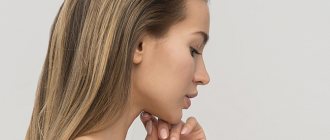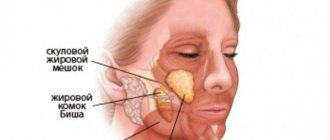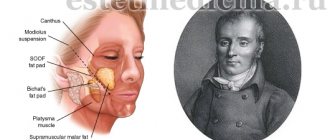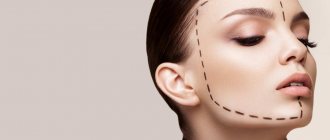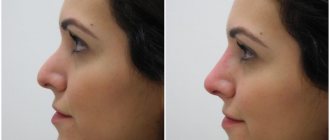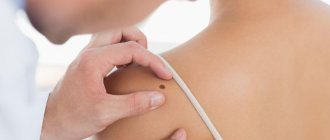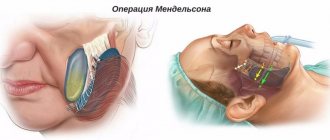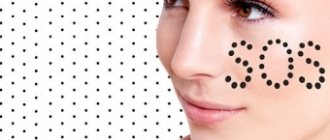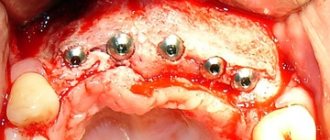- What are “Bisha Lumps”?
- Plastic surgery of Bisha's lumps: indications and contraindications
- Removal of Bisha's lumps: how the operation works
- Rehabilitation after removal of Bisha's lumps
- Results of removing Bisha's lumps
When it comes to aesthetic medicine, most people imagine a plastic surgeon as a person who corrects the contours, volumes, and shapes created by nature. But Bisha’s lumps, or more precisely, their minimally invasive removal, carried out at the Granado Tiagonse Clinic, is a rare opportunity to simply “accelerate” the process of natural changes in tissues associated with acquiring more pronounced contours of the cheekbones. What do you need to know about the popular method of facial feature correction before making the final decision to remove Bisha's lumps?
What are Bisha's lumps?
These formations, located below the cheekbone area between the skin and the mucous surface of the cheeks, are small capsules containing adipose tissue.
Bish's lumps increase the tone of the cheeks and make it easier for babies to suck. As children get older, the fatty pads protect the nerve endings from injury. But for adults they do not carry any functional load, they only add swelling to the cheeks. As the aging process begins, fat capsules sag, contributing to the formation of nasolabial folds.
How is the operation performed?
Under local or general anesthesia (if the intervention is combined with other techniques, for example, a circular facelift, blepharoplasty, changing the shape of the eyes or changing the shape of the lips). It is carried out traditionally with a scalpel or modern bloodless laser method.
The result is visible immediately, swelling is possible during the day - the cheeks may be larger than before the operation. The cosmetic suture is applied from inside the oral cavity and is invisible. It is removed after 7 days if non-self-absorbable material is used.
Indications and contraindications
Whatever size and shape they may be in a particular person, their appearance will not be considered a pathology. Therefore, the only indication for their removal is the desire of the patient himself. Removing Bisha's lumps allows you to:
- Reduce cheek volume;
- Get rid of excess fat on the face;
- Reduce the manifestation of age-related changes in cheek ptosis.
- Often, removal is performed during facial plastic surgery as an additional corrective procedure. Sometimes fat capsules are not removed, but are moved under the cheekbones to increase facial volume in this area.
The operation is not performed if:
- The patient is less than 25 years old (since after this age they can decrease naturally);
- The patient is overweight or underweight (more than 25% different from the norm);
- Planned significant weight change in the foreseeable future;
- Inflammation in the facial area;
- Serious diseases of internal organs, infections, etc.
How does the procedure work?
Bish's lumps are removed according to the following scheme:
- The preparatory stage consists of conducting a medical examination. The specialist determines indications and contraindications for surgical intervention, and, if necessary, prescribes the necessary examination (tests, ultrasound, x-ray). It is mandatory to refer you for a consultation with a dentist. Allergic manifestations to medications are also investigated. Based on the results obtained, the time of the event is set.
- The main part is surgery. It is usually performed under local anesthesia. The operation is performed on the part of the oral cavity. An incision 1-2 cm long is made on the mucous membrane of each cheek, then the fat body is partially or completely removed. It may be redistributed to areas with insufficient volume. In order to prevent inflammatory complications, the manipulation is carried out under sterile conditions.
- The incisions are sutured using self-absorbing threads, which do not require special care, and a compression bandage is applied.
- The postoperative stage consists of following a special diet, reducing activity and rinsing the mouth with antiseptic solutions.
There are the latest technologies for removing Bisha lumps. This is the endoscopic transfer or extraction of a concentrate of fat cells. The surgical process involves puncturing the skin through which the lipids are sucked out or moved to the cheekbones. The gentle operation is performed on an outpatient basis; medical supervision is not required.
Rehabilitation period
The operation itself is simple for an experienced surgeon, so there are practically no complications after removing Bisha's lumps. It is important to inform your doctor about the presence of any diseases, as well as allergic reactions to any drugs. This will allow the doctor to select the appropriate anesthesia.
The buccal mucosa heals within two to three days, pain and swelling completely disappear approximately 8-10 days after surgery. In the first three weeks after the procedure it is recommended:
- Consume liquid or soft foods to minimize the use of masticatory muscles;
- Reduce the intensity of general loads;
- Refuse the sauna, minimize water procedures;
- When sleeping, lie on your back, supported by a high pillow.
Results of removing Bisha's lumps
What does removing Bisha's lumps do? The answer to this question is individual for each patient. If the existing volume of Bisha’s fat bodies is significant, their reverse development is slow, and the condition of the remaining elements of the facial structure is within the age norm, then you can count on the people around you to definitely note: the lines of your cheekbones have become clearer, and the overall width faces - decreased. But if achieving a cosmetic effect requires an integrated approach, the doctors of our clinic will offer possible options for complex plastic correction (both including the removal of Bisha’s lumps and without the use of this method), even at the stage of preoperative consultation. This approach allows the Granado Tiagonse Clinic to be even more honest with patients, avoiding unnecessary interventions.
How long will it take for the effect of removing Bish’s lumps to become noticeable? The answer to this question will also differ in each specific case. The effect of this type of plastic surgery is hindered by the body’s natural reaction to the “removal” of a part of it - swelling of the tissues surrounding the surgical area. Recovery time depends on the individual characteristics of the body, but, usually, the cosmetic effect will be noticeable after 4-5 weeks after surgery.
Contact us now to schedule a consultation with a doctor at our clinic or to receive more information about Bisha fat pad removal and other options that the Granado Tiagonse Clinic offers.
Operation efficiency
Removing Bisha's lumps allows you to reduce the cheeks and narrow the face in its lower third.
A noticeable result is observed in less than half of patients. For people with a full face, removing them may have no visible effect at all.
In addition, the subcutaneous fat layer on the face becomes thinner with age, so removing Bisha's lumps can make the face look gaunt, visually adding several years to the patient.
Specialists at the Arnovel aesthetic medicine clinic usually offer surgery to remove Bisha's fat capsules as an additional corrective method when performing facial plastic surgery. In many cases, you can achieve the effect of a graceful facial oval using non-surgical methods, which your doctor will tell you about in detail at your first consultation.
What are “Bisha Lumps”?
The Frenchman Marie François Xavier Bichat was the first to discover the presence of fatty bodies between the masseter and cheek muscles, back in the days of Napoleon. These formations received the name of their researcher: fat bodies (lumps, lumps) of Bisha. Over the years, researchers have not found a reliable answer about the purpose of encapsulated (enclosed in a dense shell) fatty formations, isolated from surrounding tissues. The feeding process in infants (sucking and initial chewing) and the absorption of chewing loads in children are the most likely hypotheses about the role of this anatomical structure. They are confirmed by an age-related decrease in the volume of specific “lumps” of fat.
One thing is certain - the clearer facial features that appear upon reaching 30-35 years of age are due to the reverse development of Bisha's lumps. If the regression of fat bodies does not occur as quickly as we would like, such a minimally invasive procedure as the removal of Bisha's lumps provides a significant cosmetic effect without requiring ultra-radical plastic correction measures. But if Bisha’s lumps have already regressed naturally, then why carry out surgical intervention, which, without combination with other methods, will not give a pronounced effect? Only a consultation with a plastic surgeon who has extensive experience in such interventions will help determine the advisability of this type of facial contour correction.
Causes of complications and useful recommendations
All possible complications regarding this operation are reduced only to an allergic reaction to the anesthetic used (which is, in principle, excluded by prior consultation with a doctor and testing for allergenicity) and the consequences of anesthesia - decreased blood pressure, vomiting, etc. Healing, as a rule, does not exceed 2-3 days, however, pain and residual swelling may bother you for another two weeks. In order to facilitate the recovery process after removing Bisha's lumps, experts recommend reducing the load on the facial muscles as much as possible, eating liquid food, delaying visiting the sauna and sleeping on a high pillow.
Pros and cons of deletion
Operations to remove Bisha's lumps have been performed for a long time and are in demand, but the opinions of plastic surgeons about their benefits are divided.
Some are in favor of carrying out the intervention because they see advantages in it:
- the volume of thick cheeks decreases, the lower part of the face looks more harmonious;
- the overall facial contour improves, cheekbones stand out;
- cheeks sag less with age under the weight of fat;
- it is possible to avoid the formation of sharp nasolabial folds;
- tissue is minimally damaged during surgery, so rehabilitation is short and easier.
Opponents of bischectomy give other arguments:
- its result can be sunken cheeks, which visually ages the face;
- without lumps, age-related changes in the future are stronger than if they persist;
- the lower jaw after removal of fat deposits may appear wider, which also makes you look older;
- if you don’t like the effect of the operation, nothing can be radically corrected;
- with a very full face it may be completely absent;
- rehabilitation sometimes turns out to be longer and more uncomfortable than expected.
Effect of deletion
The result of bischectomy is:
- reduction in the volume of the cheeks, middle and lower thirds of the face;
- more pronounced cheekbones;
- improvement of facial proportions, its narrowing;
- visual rejuvenation by reducing the depth of nasolabial folds.
Ideal facial oval: removal of Bisha lumps
The effect will not appear immediately, since the swelling lasts for the first 3 days. The preliminary result can be observed after 1 - 2 weeks, when the sutures are removed (if they are non-absorbable). And it will be final after six months.
Removing Bisha's lumps: before and after
Contraindications to changes in appearance
Bichectomy is not performed if:
- any infection in the body;
- inflammatory process in the tissues of the face, neck, oral cavity;
- exacerbation of a chronic disease;
- diabetes mellitus;
- problems with blood clotting;
- epilepsy and mental disorders.
It is not advisable to have surgery before age 25. Over time, the volume of the cheeks decreases on their own, and it may not be needed at all. Bichectomy is not performed on people who are too fat. If your face is very thin, it is also contraindicated.
Is it possible to remove Bish's lumps without surgery?
- Until the age of 25, the facial skeleton is in a growth stage, so it is likely that baby cheeks will be less noticeable on an adult face.
- Proper and healthy nutrition will tone not only the body, but also remove excess deposits from the face.
- Facial massage tightens the skin and tones the muscles, which has a great effect on the better definition of the cheekbones.
- Face masks will not only help tidy up your skin, but will also help rid it of toxins, which will have a good effect on the overall condition of your face.
- Gymnastics for the face, which consists of stretching the lips with a tube, pronouncing the sounds “u”, “i”, “o” and “a” to stretch, as well as puffing out the cheeks.
- Mesotherapy can provide an alternative effect to surgery to remove tumors.
- Facial strobing can help you achieve clear facial features without surgery.
- Contouring will also help highlight your cheekbones through the play of shadows on your face.
Functions of Bisha's lumps in the body
Literally all people, even very slender ones, have accumulations of fat collected in capsules between the external and chewing muscles of the face. They are called Bisha's lumps.
Lumps of Bisha
1 of 2
Lumps of Bisha
Lumps of Bisha
They are named after the scientist who first described these formations in detail - the French physiologist and anatomist Marie Francois Xavier Bichat. These details are formed in infancy. Then they perform their main tasks:
- serve to protect facial nerves and muscles from friction and injury;
- give the fibers tone, making it easier for the baby to suck.
As we grow older, these areas lose their significance, but do not disappear. Bish's lumps give the face a rounded, soft outline. But it doesn't always look attractive.
